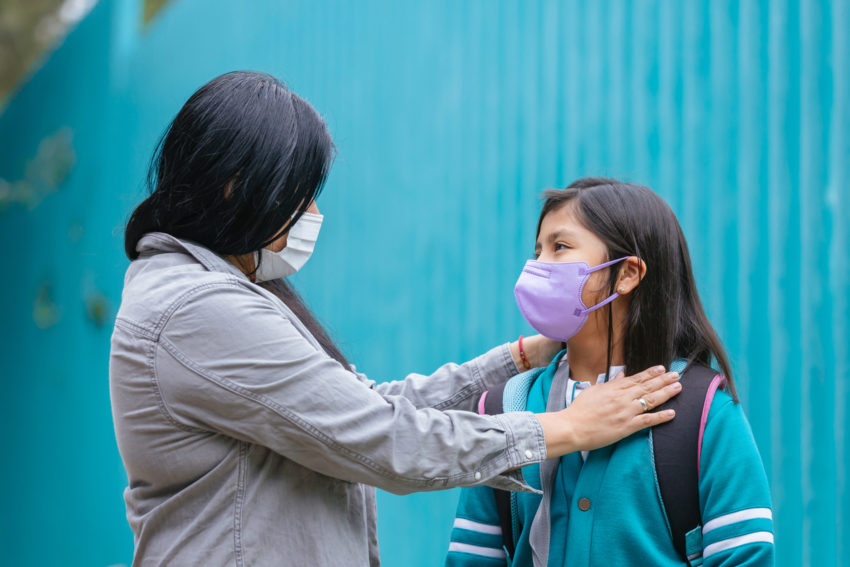
Share On Social!
Latinos are the largest racial/ethnic minority at 18.5% of the U.S. population.
Yet they face considerable health inequities — from discrimination to a lack of access to health care, transportation, affordable housing, healthy food, and more.
This contributes to a high burden of diabetes, obesity, and disease for Latinos.
In response, we need more understanding of the root causes of health inequities, diversity in the health and research fields, better education, and greater societal presence for Latinos, according to a new article in the Journal of the American Medical Association (JAMA) by Dr. Amelie G. Ramirez, director of Salud America! at UT Health San Antonio, and Drs. Rita Lepe and Francisco Ciagarroa of the Transplant Center at UT Health San Antonio.
“The changing demographics demands society to embrace diversity, inclusiveness, and equity to better navigate the future, and importantly, mandates improving the social determinants of health for assuring overall public health,” Ramirez, Lepe, and Cigarroa wrote.
Ramirez and her colleagues make these suggestions in the article:
1. Examine and Understand the Root Causes of Health Disparities
Ramirez, Lepe, and Cigarroa point out that socioeconomic, environmental, and behavioral factors account for most health outcomes.
“The social determinants of health, such as access to healthcare, affordable housing, employment, and income, to name a few, are a bridge between social and environmental conditions affecting health outcomes,” they wrote in JAMA.
 Indeed, past and present discriminatory policies and practices created inequities in social and environmental conditions, and are to blame for many poor outcomes experienced by Latinos and other populations of color today.
Indeed, past and present discriminatory policies and practices created inequities in social and environmental conditions, and are to blame for many poor outcomes experienced by Latinos and other populations of color today.
The COVID-19 pandemic worsened these deep-rooted inequities and pre-existing health disparities. Latinos suffered heavy case and death rates.
“One of the reasons for such a high mortality rate for Latinos was the lack of or confusing information about COVID-19” Ramirez, Lepe, and Cigarroa wrote. “Many federal, state, and local agencies tried to provide culturally and language-targeted information. Mainstream media rarely highlighted the coronavirus disparities occurring among Latinos, as only 1.9% of news stories on COVID-19 featured [Latinos].”
2. Foster Diversity in Health Institutions and Industries
Only 5.7% of nurses and 6.3% of physicians are Latino.
That is far less than 73.5% and 67% being non-Latino White, respectively, Ramirez, Lepe, and Cigarroa wrote in JAMA.
Not many more are on the way, either.
“Only 6.9% of medical school matriculants in 2020-2021 are Latino,” the authors wrote. “The current statistics regarding the pipeline of Latino physicians and nurses makes it nearly impossible to work toward a goal of having the health care workforce reflect the national demographics that are culturally competent in the near future.”
Ramirez, Lepe, and Cigarroa urge for toolkits to promote learning about implicit bias.
“These resources can help individuals and health care professionals identify preconceived notions or stereotypes that affect their understanding of and decision-making toward others, encourage speaking out against acts of racism and discrimination, and organizationally declaring racism a public health crisis and committing to systemic change,” they wrote. “This will require investment in and amplification of these tools and resources.”
3. Improve Access to Educational Attainment for Latinos
Latino kids who participate in early care and education centers match or exceed their peers in academic and social gains. Yet far fewer Latino children (52%) were enrolled in early care and education (ECE) centers than their white peers (63%), according to a Salud America! research review.
“Latino children face a 15- to 25-percentage-point gap in early cognitive development than their white peers,” the review states.
 This is why Ramirez, Lepe, and Cigarroa urge more access to educational attainment for Latinos.
This is why Ramirez, Lepe, and Cigarroa urge more access to educational attainment for Latinos.
They suggest starting with prenatal care and perinatal education.
That should then continue with pre-K, kindle the interest in health and medicine among secondary students, admit diverse students into medical schools, and alleviate medical students’ debt burdens.
“A first-generation graduate from college will change the trajectory of generations within their family, and certainly help them navigate the complex health care system they encounter every day,” they wrote.
4. Give “Presence” to Latinos and in U.S. Society
Did you know that more than half of the nation’s population younger than age 16 identified as a racial or ethnic minority?
The health of people of color is “vital to the nation’s future success,” Ramirez, Lepe, and Cigarroa wrote in JAMA.
At Salud America!, we have a goal to promote health equity, where everyone has an equal opportunity to be their healthiest.
That means we must address racism across medical and non-medical sectors. We need cities to declare racism a public health and safety crisis and commit to systemic change. We need a better understanding of the prevalence of social risk factors. That requires us to recognize and address the role discriminatory practices have played and contributed to social risk factors.
“Not doing so will threaten the collective national wellbeing and prevent the United States from reaching its full human potential and success,” Ramirez, Lepe, and Cigarroa wrote.
What Can You Do to Improve Health Equity for Latinos?
Download a Salud America! Health Equity Report Card for your area.
The report card allows you to see what access your community has to healthcare, food, education, and other resources.
You can help advocate for your neighbors and present the Health Equity Report Card to your city’s leadership!
By The Numbers
3
Big Excuses
people use to justify discriminatory behavior



